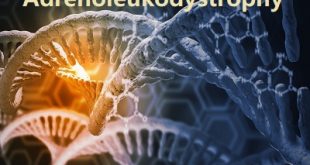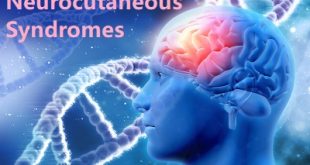Definition
Noonan’s syndrome is a genetic disorder that prevents normal development in various parts of the body. A person can be affected by Noonan syndrome in a wide variety of ways. These include unusual facial characteristics, short stature, heart defects, other physical problems and possible developmental delays.
Noonan’s syndrome
History
Jacqueline Noonan was practicing as a pediatric cardiologist at the University of Iowa when she noticed that children with a rare type of heart defect, valvular pulmonary stenosis, often had a characteristic physical appearance, with short stature, webbed neck, wide spaced eyes, and low-set ears. Both boys and girls were affected. These characteristics were sometimes seen running in families but were not associated with gross chromosomal abnormalities. She studied 833 patients at the congenital heart disease clinic, looking for other congenital abnormalities, and in 1963 presented a paper: “Associated non-cardiac malformations in children with congenital heart disease”. This described 9 children who in addition to congenital heart disease had characteristic facial features, chest deformities and short stature.
Dr. John Opitz, a former student of Dr. Noonan, first began to call the condition “Noonan syndrome” when he saw children who looked like those whom Dr. Noonan had described. Dr. Noonan produced a paper entitled “Hypertelorism with Turner Phenotype” in 1968, and in 1971 at the Symposium of Cardiovascular defects, the name ‘Noonan syndrome’ became officially recognized.
Incidence/prevalence
The incidence is one in 1,000 to 2,500 live births for severe phenotype, but mild cases may be as common as one in 100 live births. Familial recurrence is consistent with an autosomal dominant mode of inheritance, but de novo mutations are more common, accounting for 60% of cases.There is no known predilection by race or sex
Causes of noonan’s syndrome
Noonan syndrome is caused by a genetic mutation. These mutations can occur in multiple genes. Defects in these genes cause the production of proteins that are continually active. Because these genes play a role in the formation of many tissues throughout the body, this constant activation of proteins disrupts the normal process of cell growth and division.
The mutations that cause Noonan syndrome can be:
- Children who have one parent with Noonan syndrome who carries the defective gene (autosomal dominant) have a 50 percent chance of developing the disorder.
- Noonan syndrome can develop because of a new mutation in children who don’t have a genetic predisposition for the disorder (de novo).
Autosomal dominant inheritance pattern
Risk factors of noonan’s syndrome
A parent with Noonan syndrome has a 50 percent chance (one chance in two) of passing the defective gene on to his or her child. The child who inherits the defective gene may have fewer or more symptoms than the affected parent.
Complications of noonan’s syndrome
Complications can arise that may require special attention, including:
- Developmental delays.If your child is affected developmentally, he or she may have difficulty with organization and spatial sense. Sometimes the developmental challenges are significant enough to require a special plan to address your child’s learning and educational needs.
- Bleeding and bruising.Sometimes the excessive bleeding common in Noonan syndrome isn’t discovered until a person has dental work or surgery and experiences excessive bleeding.
- Lymphatic complications.These usually involve excess fluid that gets stored in various places in the body. Sometimes fluid can collect in the space around the heart and lungs.
- Urinary tract complications.Structural abnormalities in the kidneys may increase the risk of urinary tract infections.
- Fertility issues.Males may have a low sperm count and other fertility problems because of undescended testicles or testicles that don’t function properly.
- Increased risk of cancer.There may be an increased risk of developing certain types of cancer, such as leukemia or certain types of tumors.
Symptoms of noonan’s syndrome
- Delayed puberty
- Down-slanting or wide-set eyes
- Hearing loss (varies)
- Low-set or abnormally shaped ears
- Mild intellectual disability (only in about 25% of cases)
- Sagging eyelids (ptosis)
- Short stature
- Small penis
- Undescended testicles
- Unusual chest shape (usually a sunken chest called pectus excavatum)
- Webbed and short-appearing neck
Diagnosis and tests
- A doctor will diagnose Noonan syndrome based on key signs and symptoms. Diagnosis can often be difficult because of the subtlety of some of the features associated with the condition.
- In some cases, the disorder isn’t diagnosed until someone with Noonan syndrome has a child with more obvious signs and symptoms. A diagnosis can be confirmed through molecular genetic testing.
- The earlier Noonan syndrome is diagnosed, the earlier treatment and prevention strategies can be implemented, leading to better outcomes for patients.
Treatment and medications
As Noonan syndrome stems from a genetic defect, there is no cure. Treatment aims to manage the associated symptoms and complications, so it varies for each individual.
Potential treatments include:
- Heart conditions: Medication or surgery, or both, may be necessary to manage heart defects. Regular check-ups may also be recommended.
- Growth issues: Height and weight should be routinely monitored during childhood and adolescence. Blood tests may be requested, and growth hormone therapy suggested as a treatment option.
- Learning difficulties: Infant stimulation programs, physical therapy, speech therapy, and educational interventions may be necessary to address learning problems in childhood.
- Excessive bleeding and bruising: Drugs to help blood clotting may be prescribed, and it may be recommended to avoid aspirin and products which contain it.
- Undescended testicle: Surgery may be required if one or both testicles fail to move into position.
- Eye and ear issues: Regular vision and hearing examinations of eye health and hearing may be advised. Glasses, contact lenses, and hearing aids will be recommended as appropriate.
Prevention of noonan’s syndrome
Couples with a family history of Noonan syndrome may want to consider genetic counseling before having children.
 Diseases Treatments Dictionary This is complete solution to read all diseases treatments Which covers Prevention, Causes, Symptoms, Medical Terms, Drugs, Prescription, Natural Remedies with cures and Treatments. Most of the common diseases were listed in names, split with categories.
Diseases Treatments Dictionary This is complete solution to read all diseases treatments Which covers Prevention, Causes, Symptoms, Medical Terms, Drugs, Prescription, Natural Remedies with cures and Treatments. Most of the common diseases were listed in names, split with categories.








I have just the same problem please help me
Please consult a doctor, based on your symptoms and signs your doctor will provide treatment and therapy.